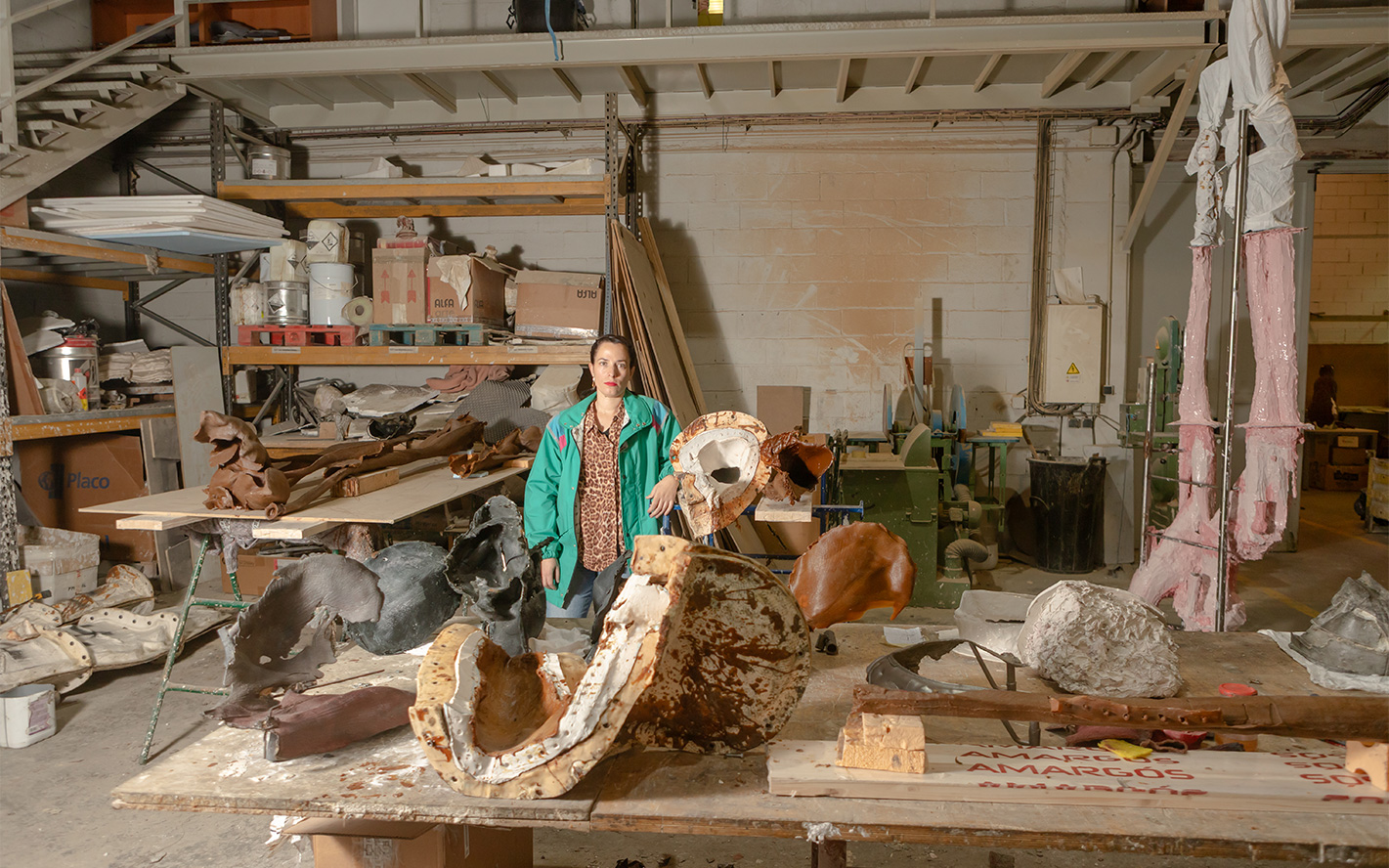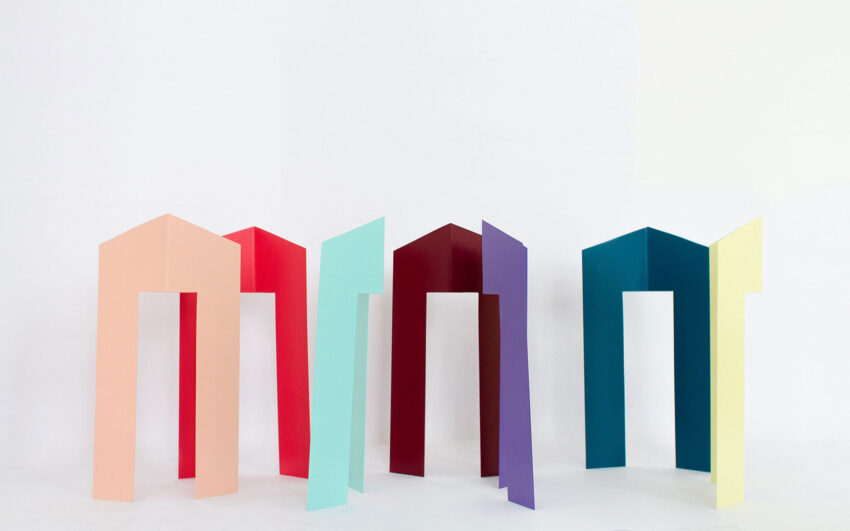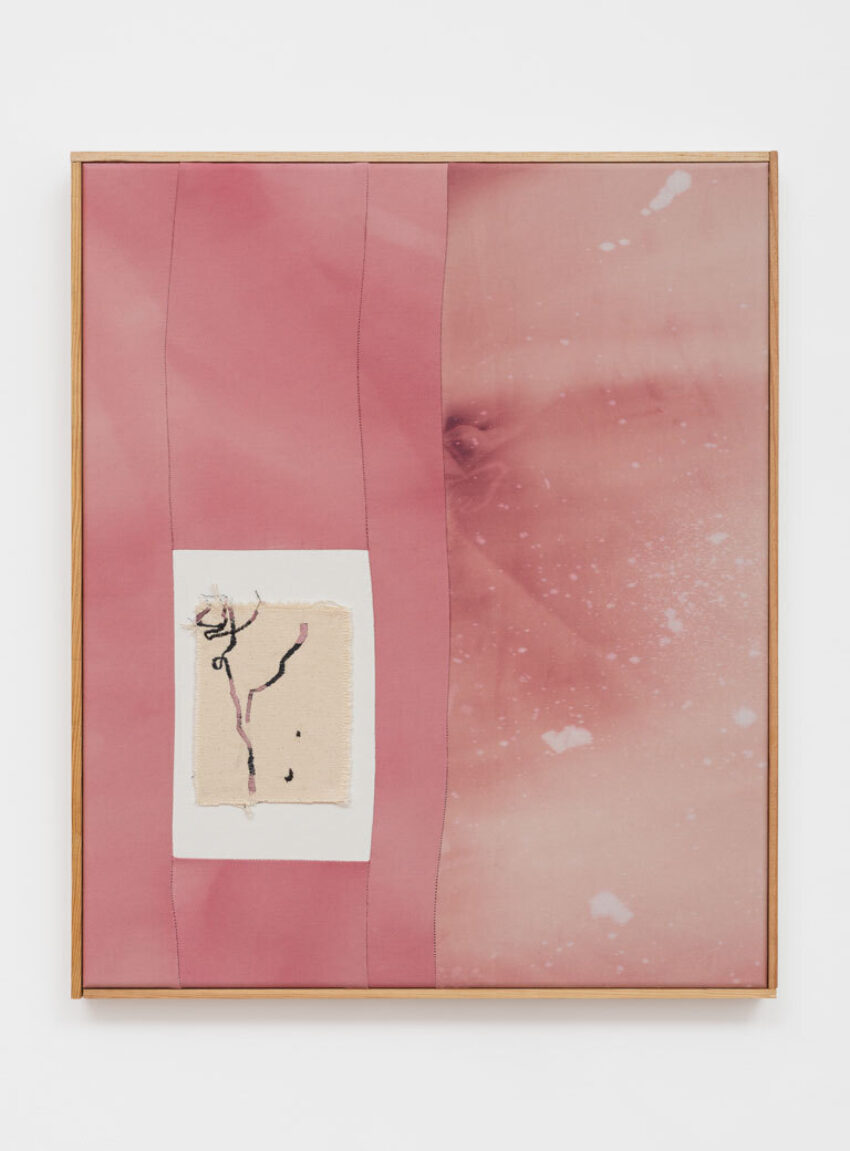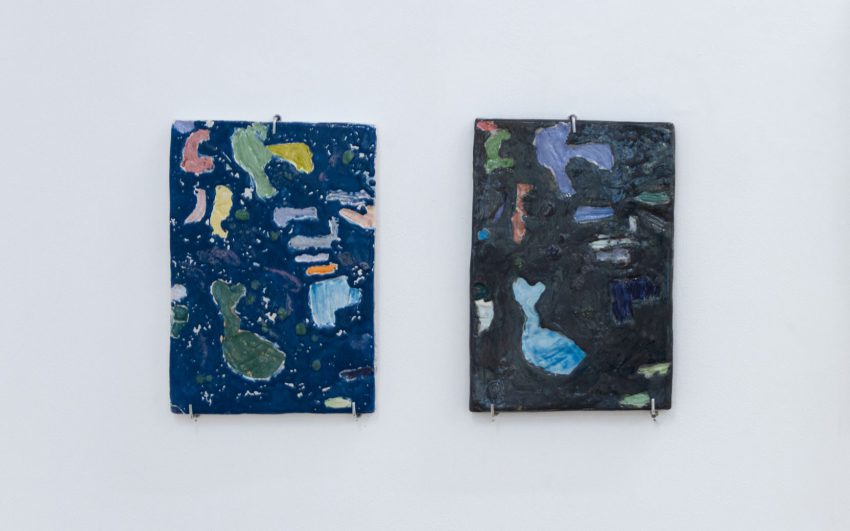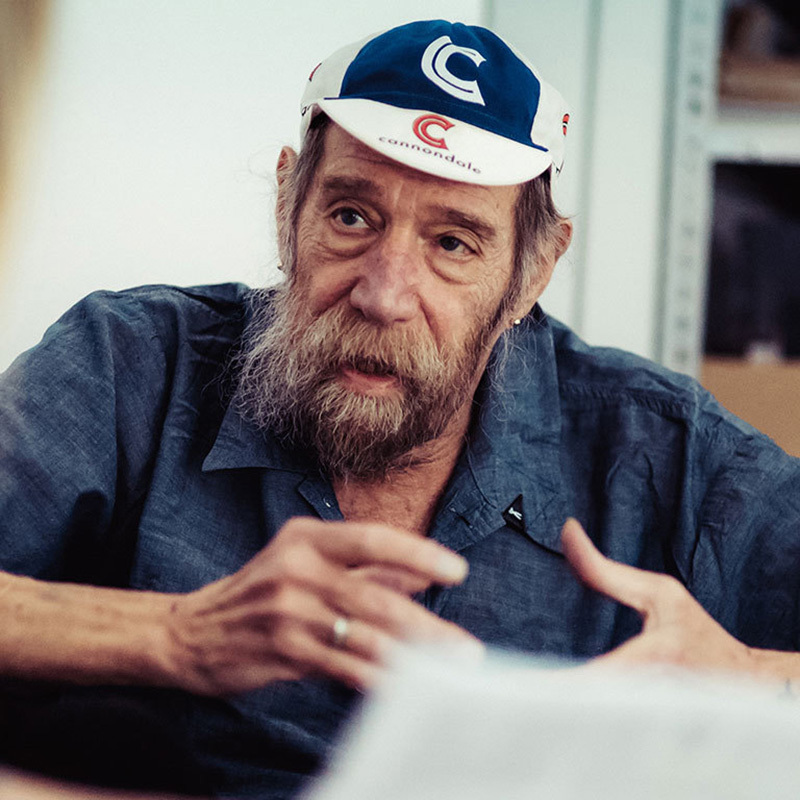June Crespo is a sculptor who expresses her physical feelings and intimate relationships in her body through her work. She amplifies and projects them onto the materials. These she mainly creates herself, using different molds, and eventually makes the elements fit. Her sculptures do evoke genderless bodies, monstruous, delicate, fragile and vulnerable at the same time.
How did you get into art?
At school, art was one of my points of interest together with science and biology. Eventually, I decided to study fine art in Bilbao: it became the place where I was able to open my mind. I was lucky to have two professors who helped me find my own language - or at least helped me starting to find it! And then I just followed my path, working all the time.
Finding your language must be the hardest thing as an artist – what is it like now?
For a couple of years, it has been a configuration of assemblage and experimental use of printed matter and other materials, mostly related to sculpture, but also interwoven with other uses of image. Early on in my career, I started with scans and prints that I folded - until I eventually found out that the volume of the foil was more important to me than the image itself! Now, I produce molds and casts, making objects that I fragment, amplify and scale.
Talking about scale – has your work “grown”?
In the last few years, my work has been getting bigger, but it’s still very related to the human scale. Because to me, sculpture is like a body-to-body encounter. It’s an entity that gives me consciousness of my own presence.
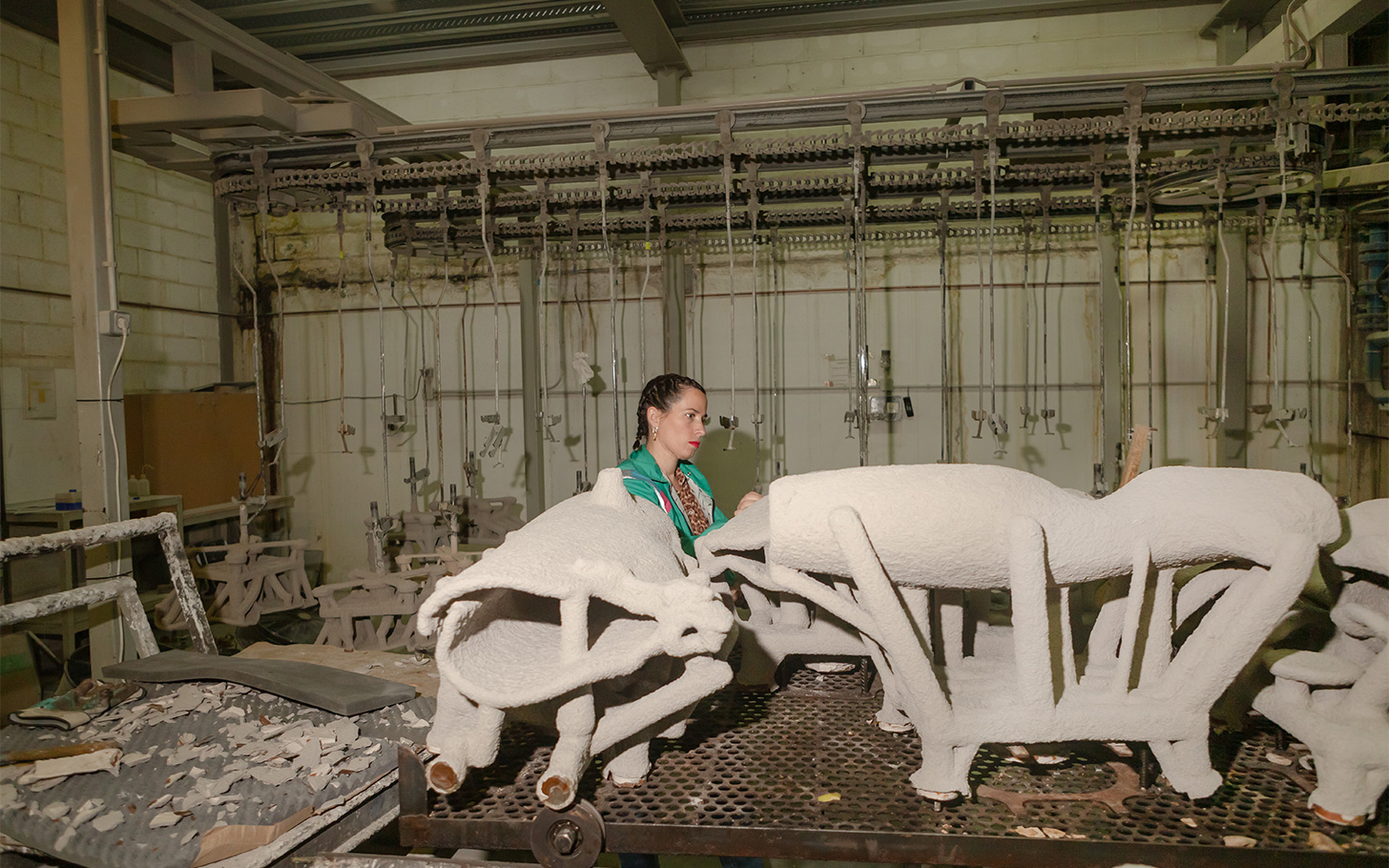
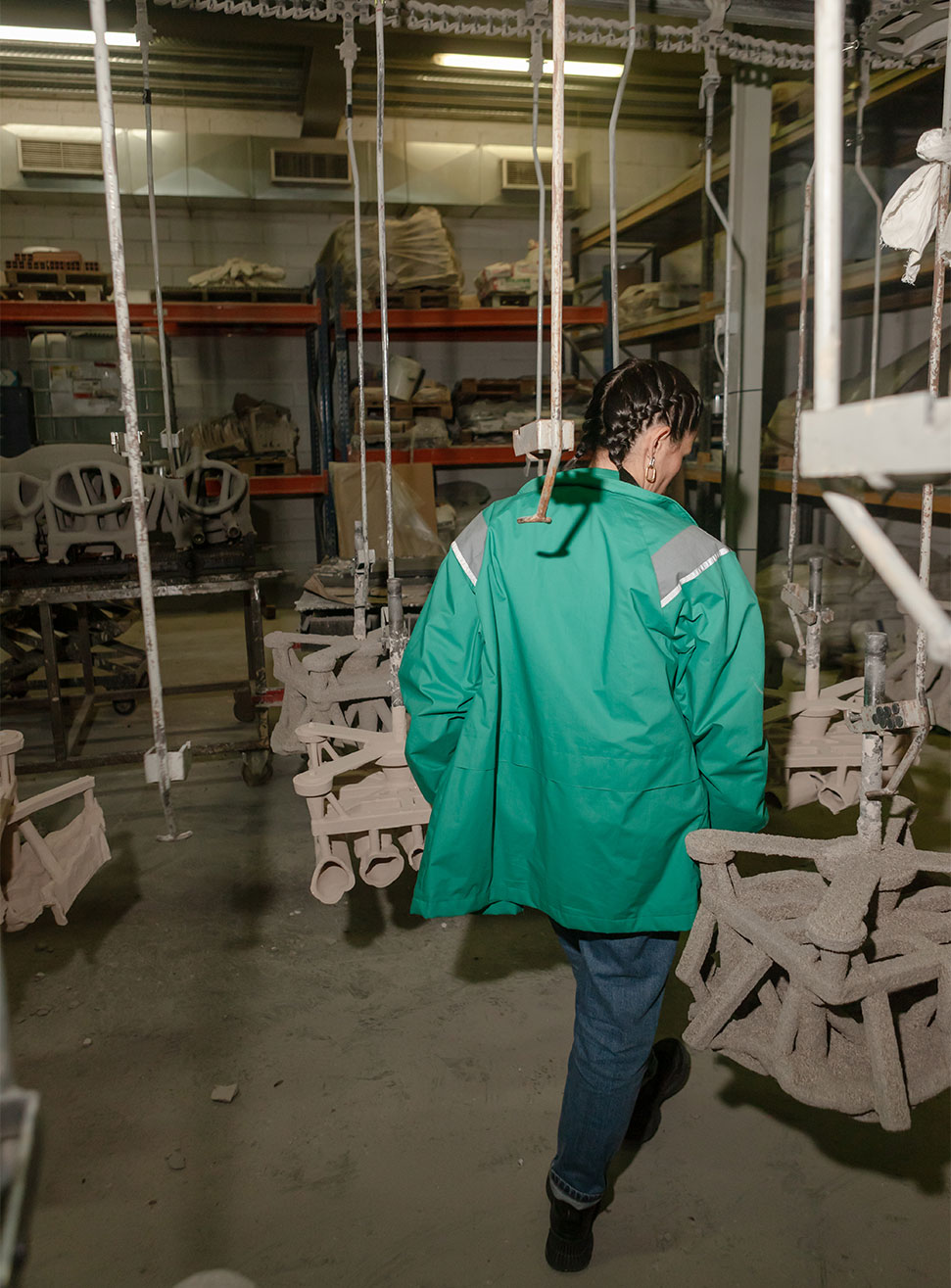
Your sculptures do evoke bodies. Is this a perception that you are after?
Yes. Even though my representation of the body might not be direct or obvious, many of my works are inspired or resonating with very body-related feelings or sensations. Sometimes I feel they are a translation of gestures, feelings or balance… It’s about a feeling inside of me and being able to recognize it while working on the sculpture. Of course, I often only realize what I have produced after it is done.
Are you “talking” to the sculptures while working on them?
There is a lot of negotiation listening to the object itself! You must listen and follow somehow. I am just the assistant of the work and help bring it to life.
Your feeling comes through in your sculptures – are you concentrating on that?
I am not really looking for it, but it happens. My way of dealing with my work lately is thinking that I must serve the work. I must enable it to exist, so that it gains its own right to exist. I am just there. Of course, I decide on the elements that are part of the work, but I am negotiating all the time. My process is intuitive and experimental.
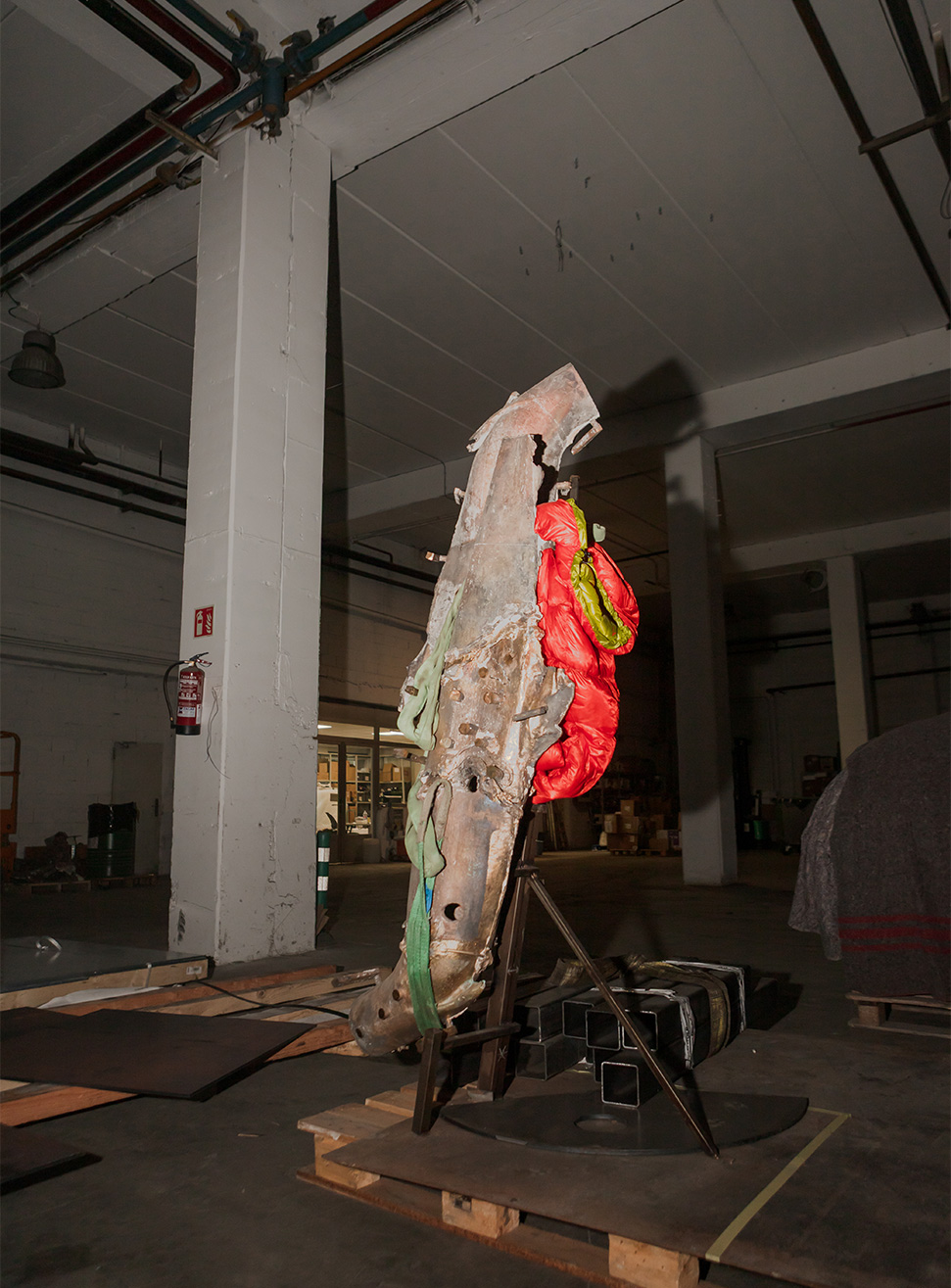
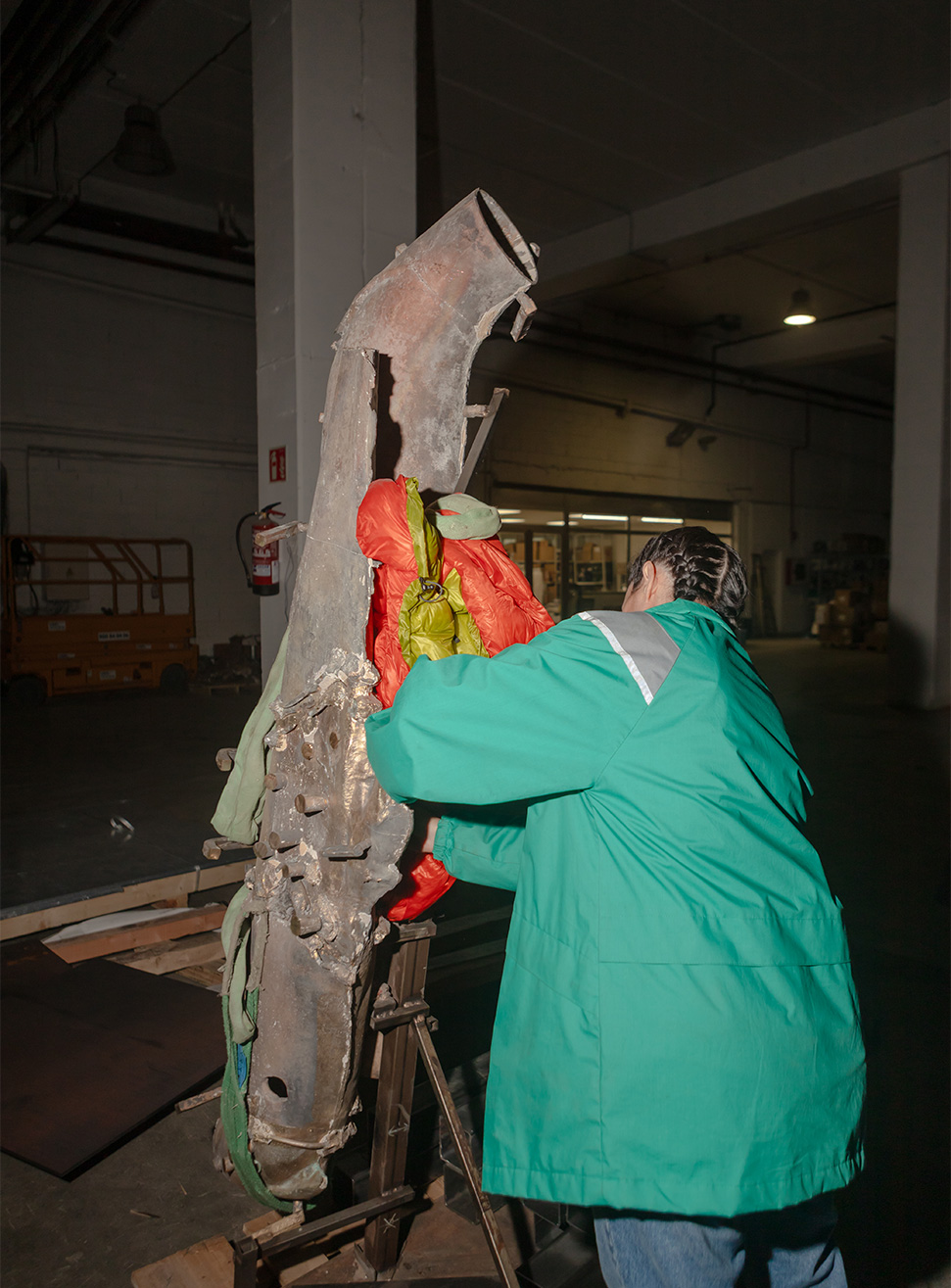
How do you start a piece?
I have a motor idea or intuition which can come from different origins: it could be images, dreams, memories, this is one layer. And then I have a physical feeling, like being suspended, or awaking from a dream, standing up or laying down and feeling my body in different postures. I might be looking at the relationship between my tongue and my palate, or my eye and my eyelid: intimate relationships.
And then you focus on these feelings?
Yes. And then I amplify and project them in different ways to relate the materials. For instance, when I let fall a translucent textile on top of hard material, it becomes the translation of the relationship between my eye and my eyelid. There is something from inside that goes outside, and I put it in relation with the object. These are intuitions, just to make me start.
Do you sketch these ideas?
Usually I don’t sketch. Sometimes, when I face an exhibition room and need to organize, I do previews on maquette or 3d, to give me an idea of the dimensions or proportions, but once I am working I try to forget those. Otherwise, the image becomes too strong. Which annoys me – because you never reach that level of a phantasmatic image, so I prefer to face the real materials and its limits. I work a lot making things fit. I take different elements and don’t know yet how to use them, but once I hold them, I start to put them in order, to cut, to reassemble.
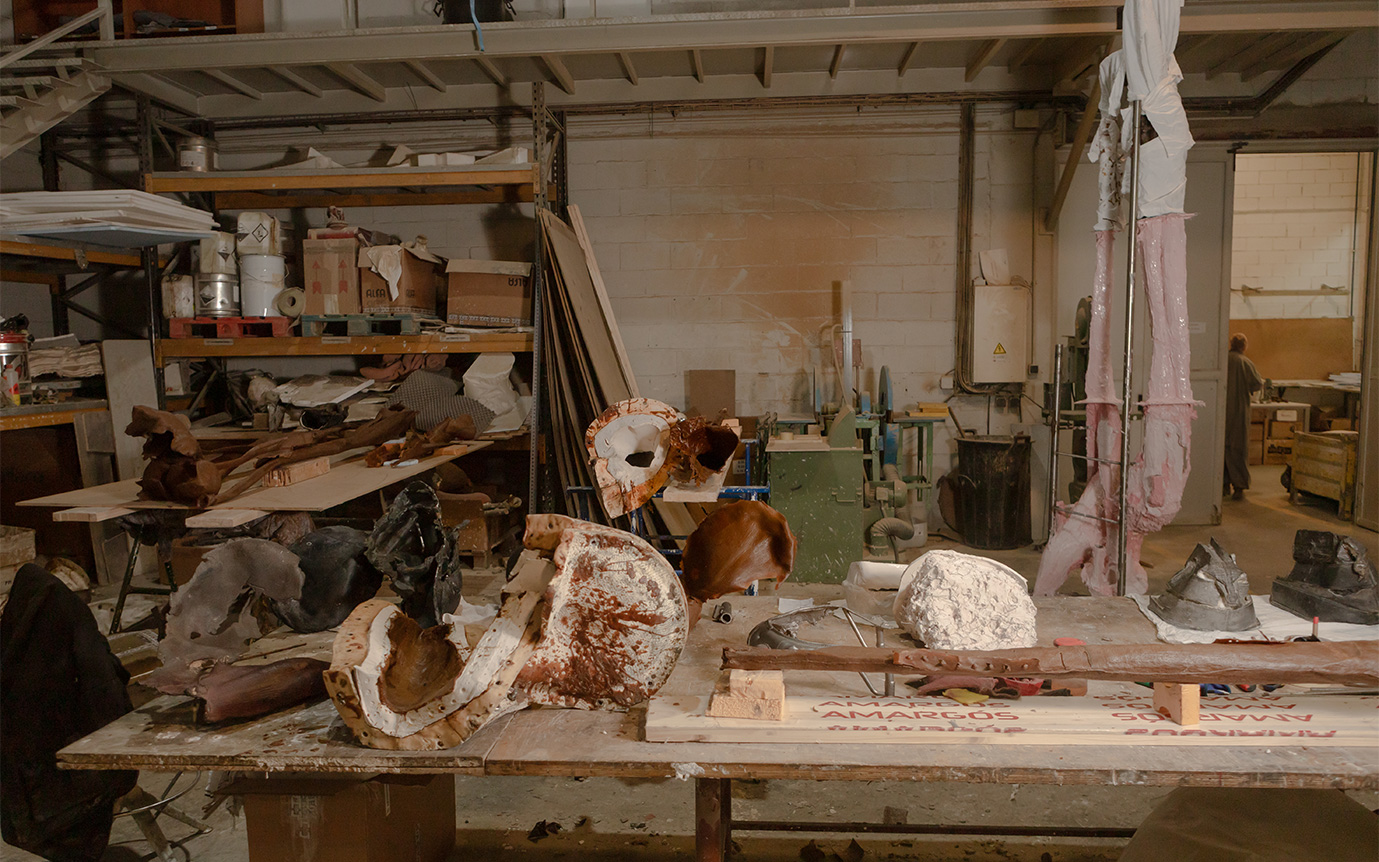
So it’s about transforming objects?
I detach the object from its original function, and it allows me to see something new. My work is about expanding the ways of association that you can project on one or more objects. It’s about how the object makes me feel. I can feel the tension these sculptures have in my muscles and in my skeleton; they resonate deeply with me. A work doesn’t have a proper message if you don’t receive in your mind and body.
Where do you find your different elements? Are they Ready-mades?
In the beginning I might have been working with found objects, mixing them into an assemblage. But the last 10 years I learnt how to make molds, to experiment with other techniques and procedures, how to integrate things… I make or reproduce most of the elements myself departing from existing shapes. Apart from pieces like straps, recycled truck canvases or ventilation pipes, that I use with other purposes.
I had the impression that your sculptures are very sensual. Is that right?
Yes, it is. There is a lifeforce in my work.
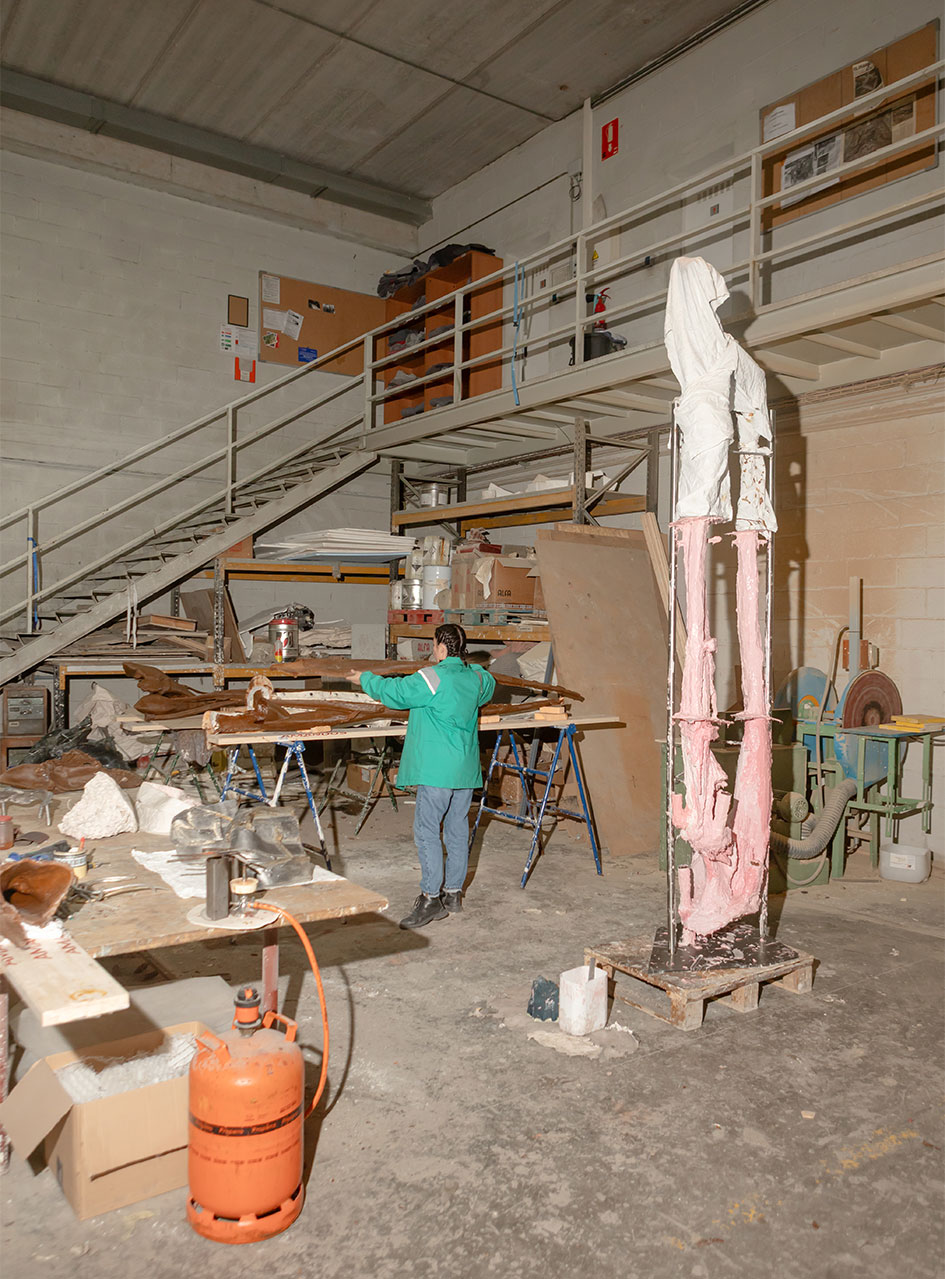
You just mentioned the relation between your pieces. Do you work in groups?
I consider my practice not as project based, in the sense that I don’t create a new body of work for an exhibition. It’s more that I have different paths that are open, and they converge. I can go back to shapes I came across a long time ago and put them together with things I discovered two years ago… it’s an inner communication between my objects, and motives might reappear. It’s because I work a lot with repetition and variation: the molds I produce and use allow me to do that, so I’m able to do variations coming from the same motif, simple or complex.
You mean different versions of the same motif?
Yes. There is one substance, but it is going through different objects. That is one way I think about the groups and their relations. If I feel that I need diversity in an exhibition, I work with different proportions, materials, gestures and qualities. I try to bring this contrast into the exhibition. By gathering objects or putting things together which are apparently not from the same family, I allow the differences to coexist.
Like in a real family!
Yes (laughs). In a complex way, in my shows, you can see cohabitation. The objects are diverse, but they feed into the same universe. Also on a conceptual level, it’s important to go up one level and speak about the complex things in our world.

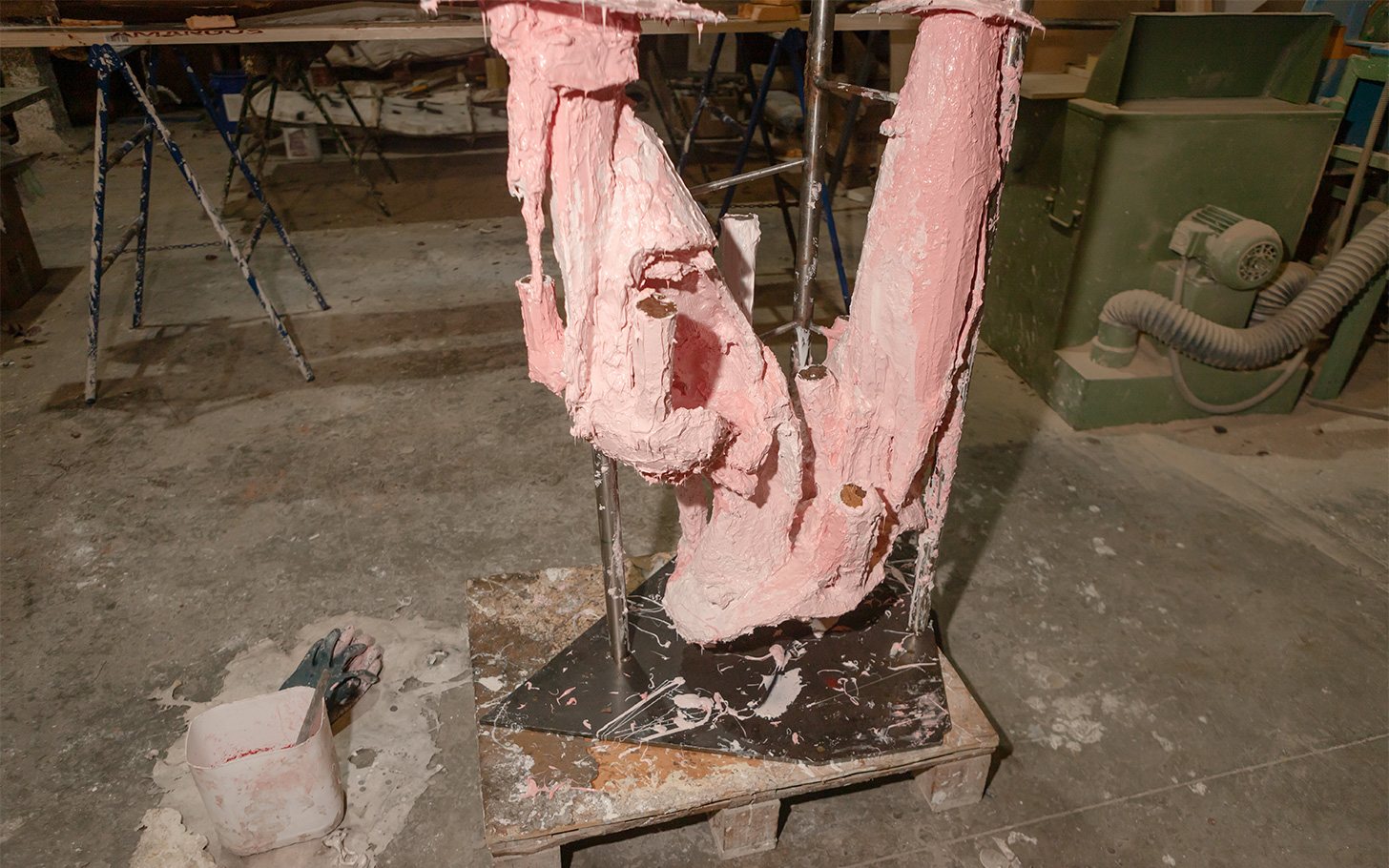
You put in the word diverse – the “bodies” you are making are neither male nor female?
In the last few years, I started with organic shapes that I digitally scanned, then changed their scale and somehow produced an extraction of them. You could not see what they originally were anymore. It’s not about male or female, there is no gender, it’s just a way of putting together opposites, of creating paradoxical relations. They might be monstruous, but also delicate and fragile, vulnerable... It is interesting when one object can reach out in many different directions. And I gather all of these in just one work.
You mix stone, fabric, metal – is it like a body that also consists of different parts?
The operation I must do is to articulate those individual parts so that they become one, to give you the feeling that the work can stand alone, that it forms a unity. It’s important for the sculptures to become a body in a broader sense.
In an exhibition space, these “bodies” seem like a community?
You walk around and discover things as you move. The choreography in the space is important, it should expand your perception. It is a way of providing occasions for new encounters, with the object but also with yourself in front of the object.
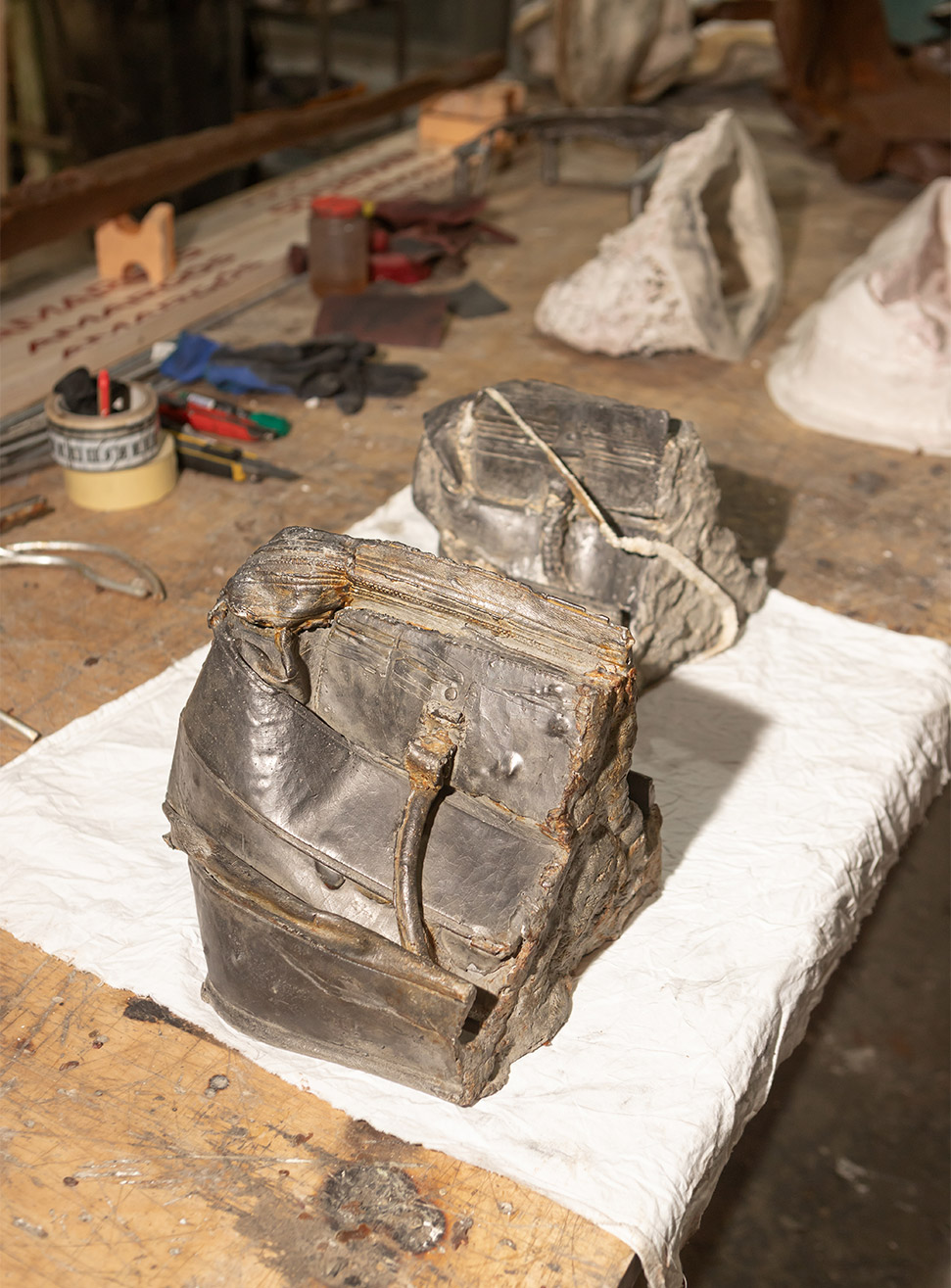
How fixed are the soft parts on your sculptures – do you move them around sometimes?
During the process, the elements of the sculptures move and circulate. Encounters are the most important part and many times they come together by accident or miscalculation. To be awake and recognize new ways is more important than reproducing what I had planned in the first place. However, if I reach this moment when I feel something is existing in its own right, I tend to respect it.
Do you feel your work has something classic about it?
Well, regarding those last concrete works I did, to me they have the feeling of classical sculptures or Kouros. They look as if they have been existing for many years.
You are also using straps to hold some of your objects against a wall, and by doing that, you add tension. I even had the feeling that the sculpture somehow wants to break free from the wall…
You can feel a lifeforce and something pulling you, but actually, I used to feel quite the opposite! In my perception, something is holding you and making you feel safe. But it really can be read both ways: you can let go of yourself because something is holding you, or you want to pull away.
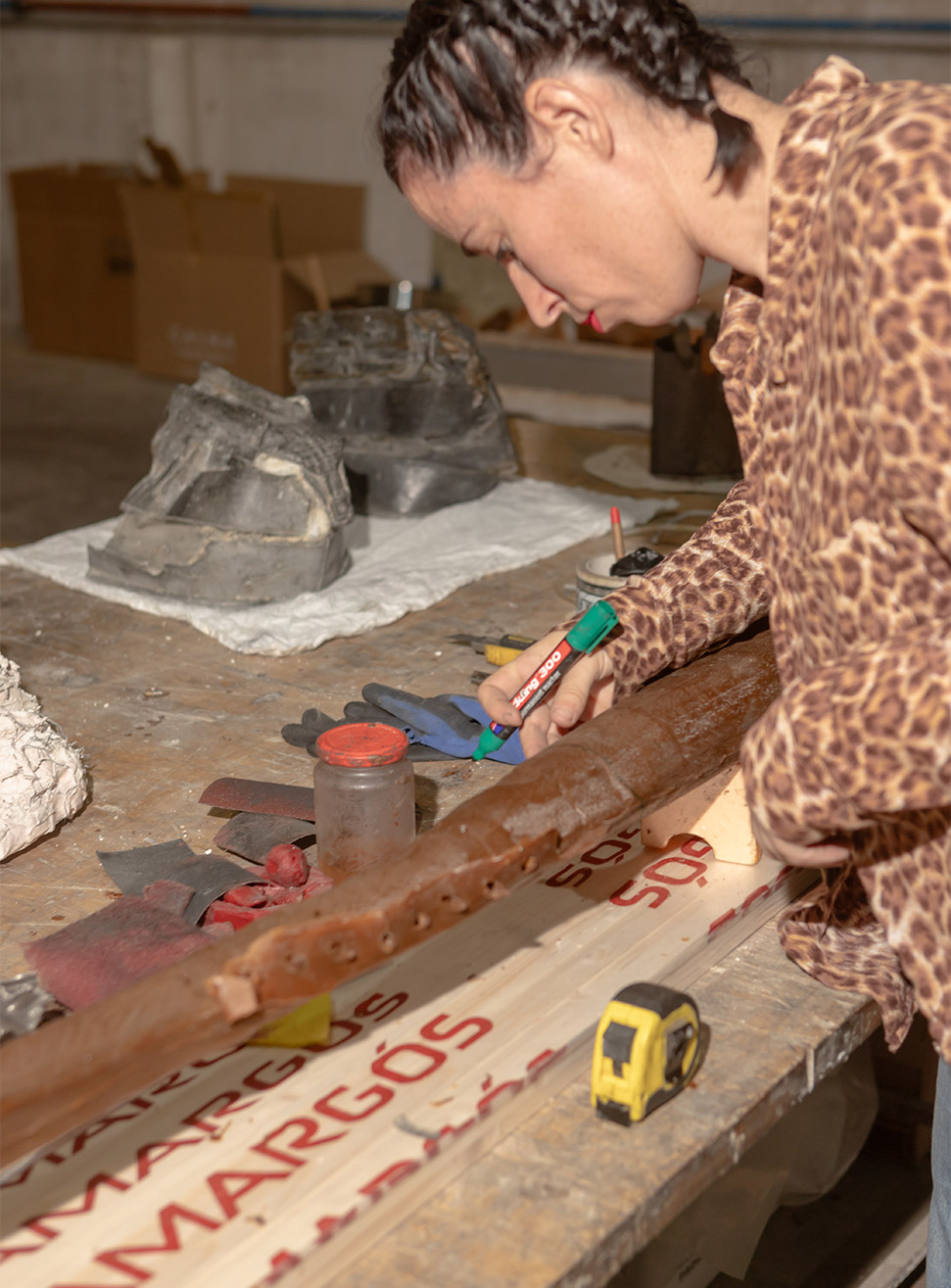
So you allow different readings for your work?
Yes, complexity is important. It’s not about what I imagined for the viewer to see, but about creating something complex. I don’t want to do shortcuts, the complexity of discovering is crucial.
At the beginning, you mentioned that your work is getting larger. It is certainly different now from the scale of the sculptures that were shown at the Venice Biennale 2022, The Milk of Dreams. Can you tell me about the torsos you exhibited?
These came from mannequins I found in Netherlands during a residency. In Venice, I casted these torsos in metal, pushing the technique by placing industrial pipes and profiles from windows or other structures inside. In the beginning, these works were related to Henry Moores “Helmets Heads” series. The torso was like an armor or helmet to protect yourself, where the inside and outside surface and spaces are totally related. Now, you could of course see them in a narrative or figurative way, as just two superposed torsos. But the uncanny to me were the holes left by the missing arms, heads and lower body. Those active holes were the most important element of the torsos!
Talking about Henry Moore – who are what are your other inspirations?
My interest in botany is still there, which is why I now use more organic elements in my work. Regarding work, I look mostly at other sculptors, especially female ones: Lygia Clarke, Louise Bourgeois, Eva Hesse, Alina Szpocznikow, Isa Genzken, Alexandra Bircken or many friends from my generation.
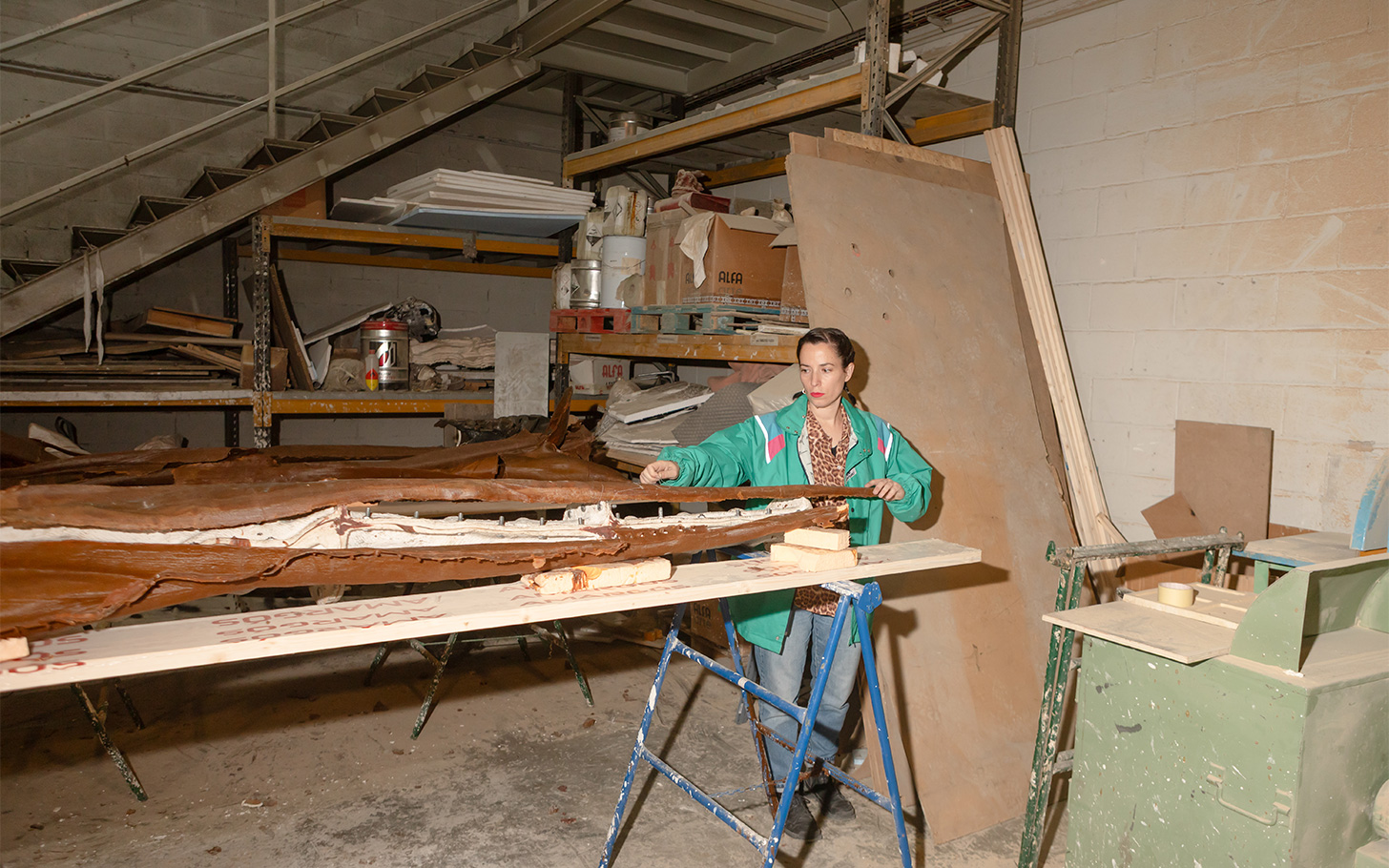
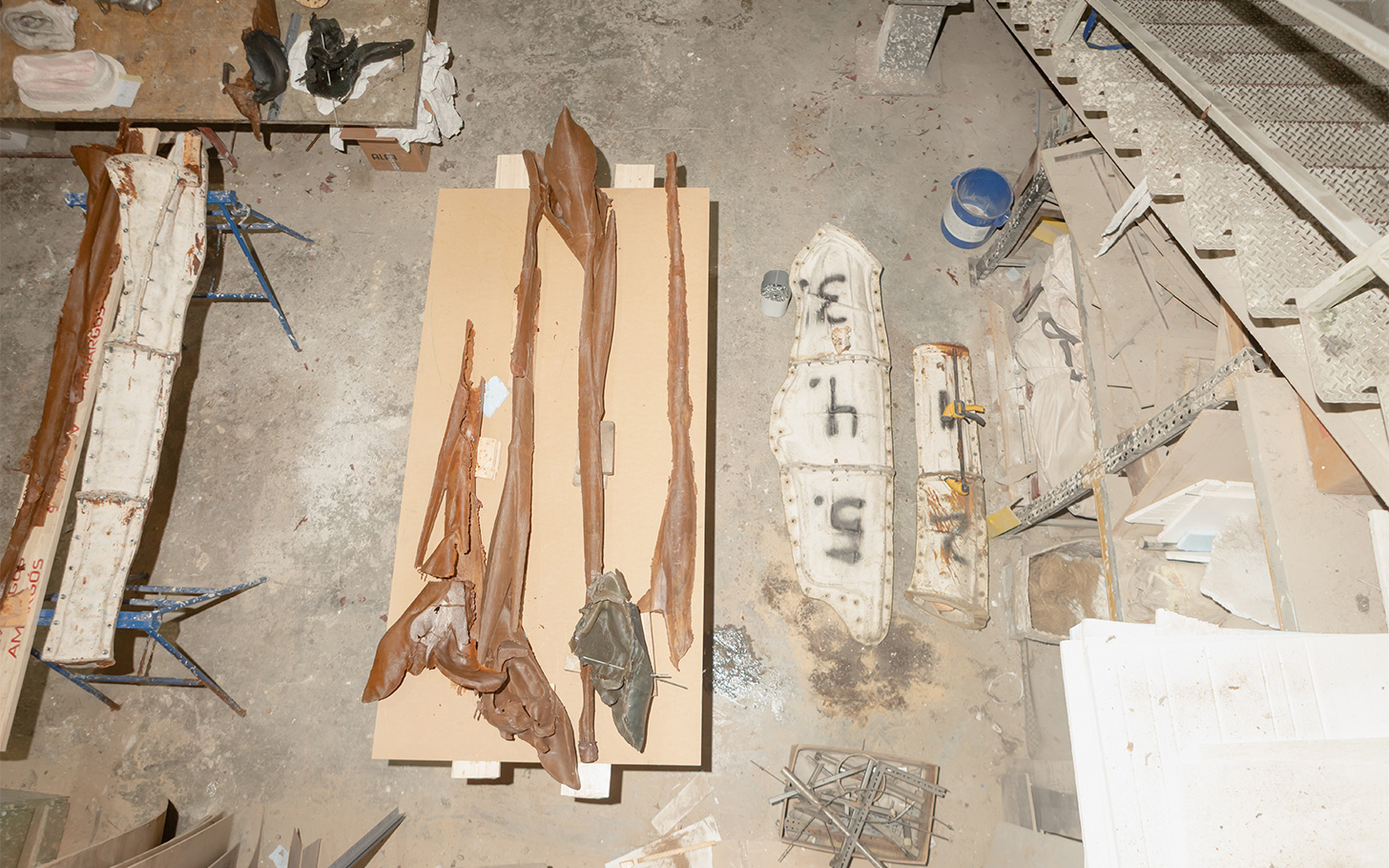
Do you think they express themselves differently?
Not really. But they just speak to me, to my technique, it’s more like a reflection. And through them I find strength to work and keep working. Their commitment to their practice is giving me fuel and energy.
These women were often not supported in pursuing their practice. Do you think it’s harder for women to succeed?
I’m not sure. Of course, there are still many inequalities in general. But personally, I look so much at woman artists that I feel they are just there. My own experience was a positive one though, so I might have a distorted view after all… I work a lot, but I always had response and support that made me grow.
What are the new projects?
I will have a show at Vienna’s Secession in September 2025, and there will be a show at Le Crédac, close to Paris, which is opening the week after the one in Secession.
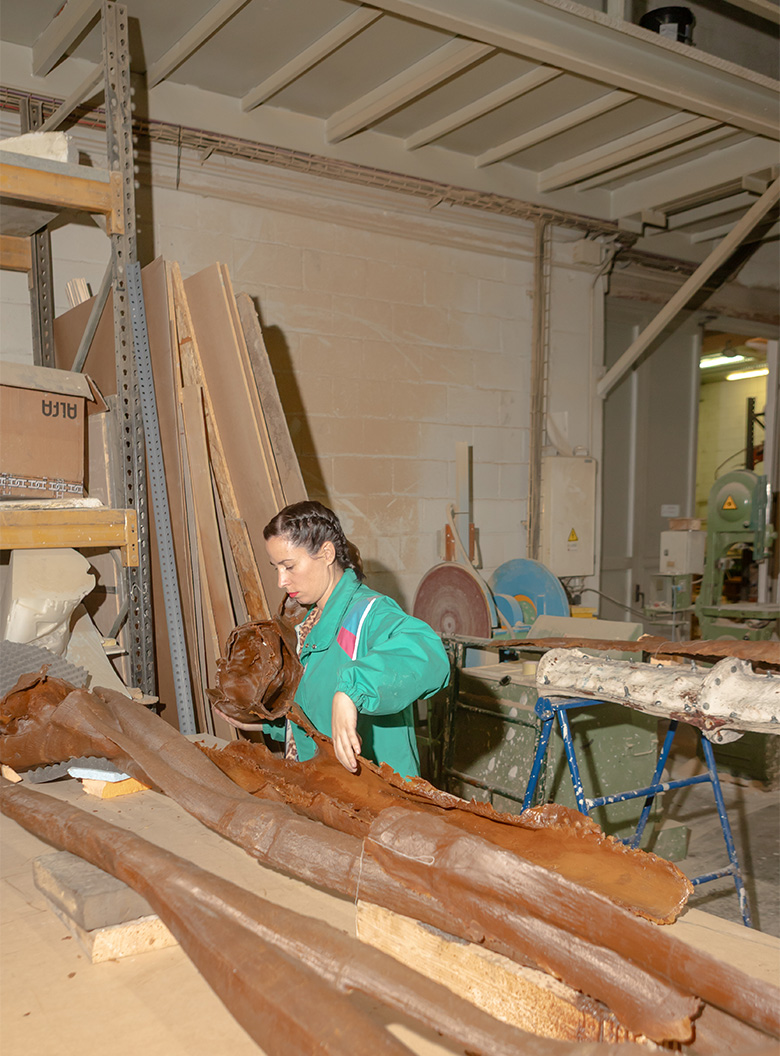
Text: Alexandra Markl
Photos: MARAMCMILLER


